Key stats
- 300 %Increase in month-to-month email revenue
- 20 %Higher open rate
ActiveCampaign was the perfect fit for us. It has all the features we wanted, for a reasonable price. If a company has as many contacts as we have but doesn’t have an enterprise level budget, ActiveCampaign is a great choice.
Take the hum of an idling vintage film projector. Add in the buzz from a TV’s picture tube. Finish off with the crash of a stick smashing into dry ice and a hint of a vacuum cleaner’s swoosh.
What does that equal?
The iconic sound of a Star Wars lightsaber battle.
Great sound design develops your story in ways that are both subtle and overt. Some elements of sound design are so timeless that methods used as far back as the 30s and 40s are still in use today.
Although many sound effects are still created using tried-and-true methods, the way artists get access to sound effects has changed.
- Starting in the 1920s, artists created live sound effects in-studio for radio shows
- By the 1990s, sound libraries circulated on hard drives
Today, professionals download sound effects on demand. And as video platforms, podcasts, apps, and other media incorporate more sound effects, the audience for sound effects has grown.
The expanding need for high-quality sound effects is what led Tasos Frantzolas to start Soundsnap in 2007. What if sound enthusiasts could access any sound effect they needed – digitally? What if the site ran on a Netflix-like subscription?
To pull it off, Tasos needed to answer a question: How could he make it easy for people to find the sound effects they were looking for?

Disney’s sound effects Production Room, 1930’s (Source: LIFE archives)
If you’re animating a robot with seasonal allergies, where do you find the perfect sound for a cyber sniffle?
Soundsnap, the world’s leading professional online sound effects library, features high-end sounds recorded by professional sound designers across the globe. It was the first sound effects library to introduce a “Netflix model” — pay once, and you can download as many sounds as you want.
Who are Soundsnap’s customers? Anyone who needs sound effects. Their client base includes:
- Hollywood movie studios
- Community theater directors
- Video game developers
- Mobile app designers & creators
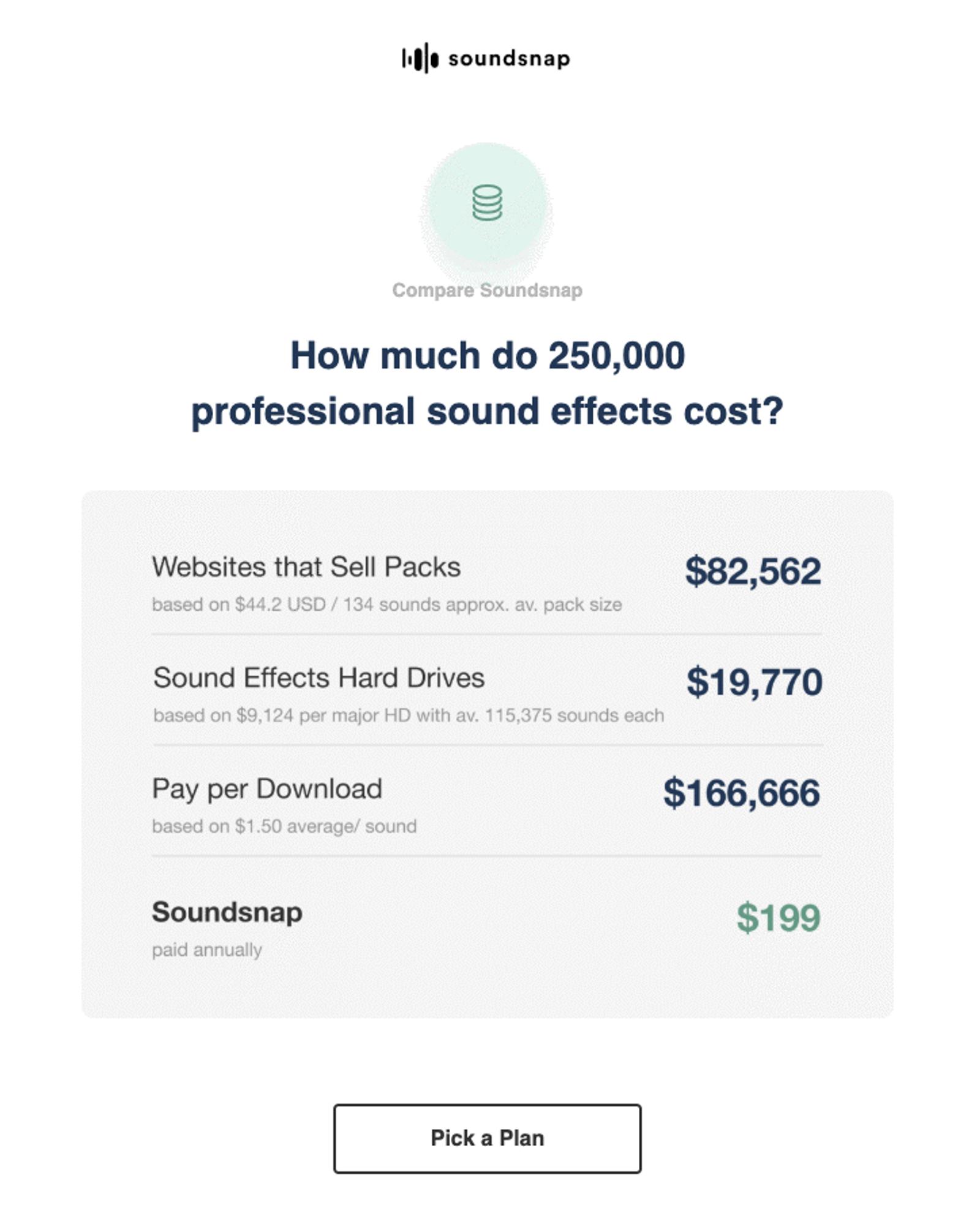
Not all projects have Hollywood-level budgets. Soundsnap makes it affordable for them to use professional sound effects, too.
As of September 2019, Soundsnap has over 1,885,000 registered users and almost 250,000 sound effects in its catalogue.
Each sound professional has distinct needs, for projects that range from major Hollywood films to one-person podcasts. Soundsnap has to make it easy for everyone to use their website — no matter their industry, location, or level of expertise.
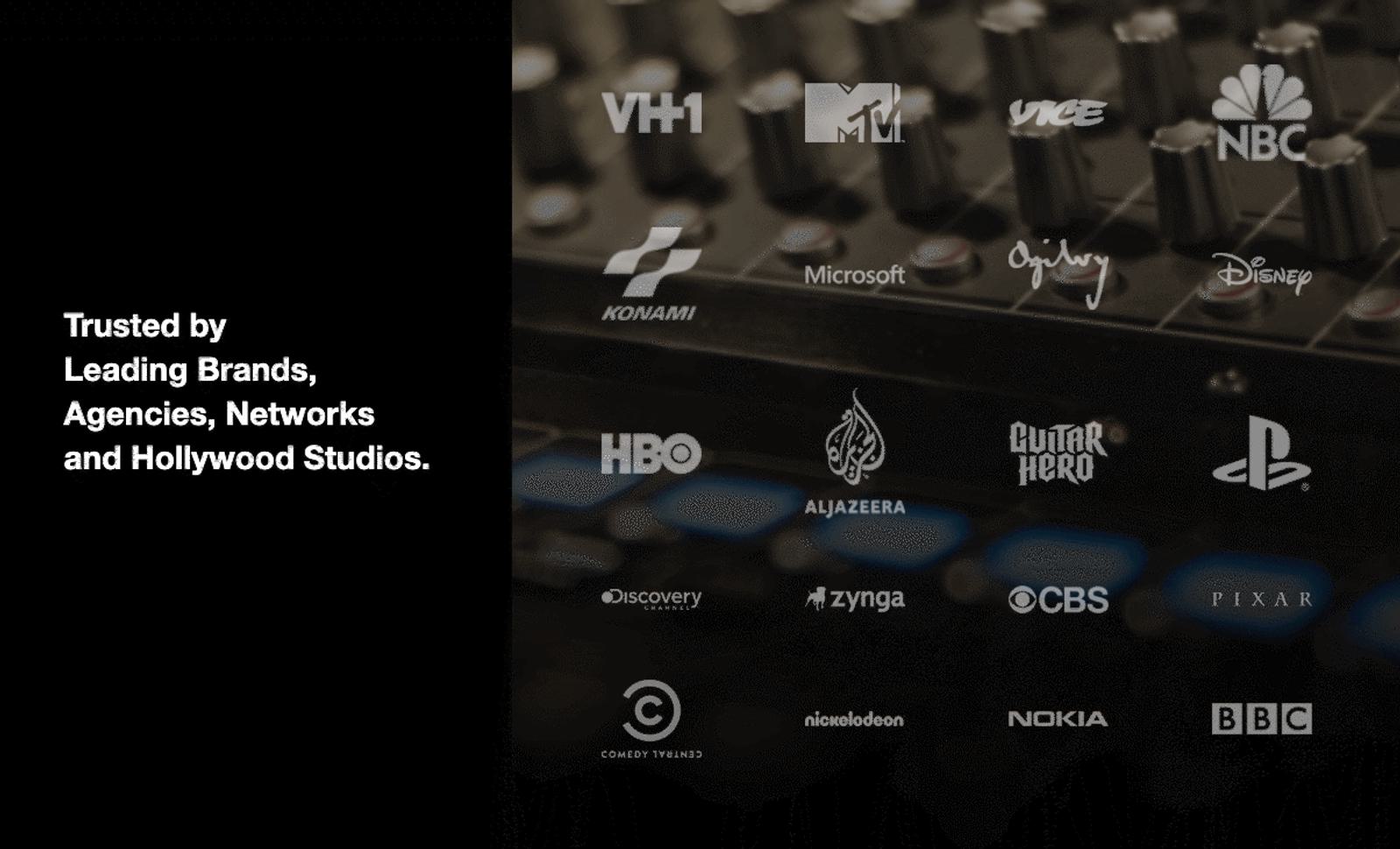
There’s a good chance you hear Soundsnap’s sound effects when you watch movies, binge a TV series, or while you play video games.
Daniel Koscielski is Head of Growth at Soundsnap. When he joined the team, one of his first objectives was to make their emails more efficient.
To do that, they needed to be able to segment and automate their emails — they needed a marketing automation tool.
“ActiveCampaign was the perfect fit for us,” says Daniel. “It has all the features we wanted, for a reasonable price. If a company has as many contacts as we have but doesn’t have an enterprise-level budget, ActiveCampaign is a great choice.”
Soundsnap serves over 1,885,000 users – with a team of 6 full-time employees.
How does Soundsnap’s team use ActiveCampaign to personalize their customers’ experience, so that people can quickly find professional sound effects for their projects?
- Behavioral targeting that lets them automatically follow up based on what people want
- Predictive sending – so that each person gets messages at the perfect time for them
- Surveys that collect persona information (which leads to better segmentation)
- A customized Soundsnap onboarding experience for each new member
How behavioral targeting increases revenue
If you needed to create a sound for something that doesn’t exist — like, for example, a robot’s sneeze — what exactly would you search for? How much time would you spend down rabbit holes, listening to countless sounds that were sort of close to what you want, but just not quite…right?
Behavioral targeting is one way that Soundsnap makes it easier for customers to find the sound effects they need.
When someone repeats an action on your website, it signals their interest. For example:
- Someone who goes to a specific page on your site a lot (especially over a short period of time) is probably pretty interested in its content.
- If someone searches your website for multiple variations on a word, they probably want to find a specific product — or in Soundsnap’s case, a specific sound.
Through site tracking, ActiveCampaign can “see” a visitor’s actions on your website and perform multiple actions in response to that behavior.
Soundsnap also tracks their on-site searches, so they can get a better sense of what people mean when they enter a particular set of words. How?
- Soundsnap creates a list of keywords related to each of its sound collections
- When people search for the predefined keywords, ActiveCampaign adds a tag of that keyword to a user’s contact profile
- The tag triggers an automated email, which contains a link to a complementary sound collection that might have the sound effects the user needs
Right now Soundsnap has about 45 curated collections of sounds, ranging from London Express to Rev it! Car Game Sounds.
If you search their website for variations of robot sounds, Soundsnap uses behavioral targeting to email you a link to Video Game Voices.
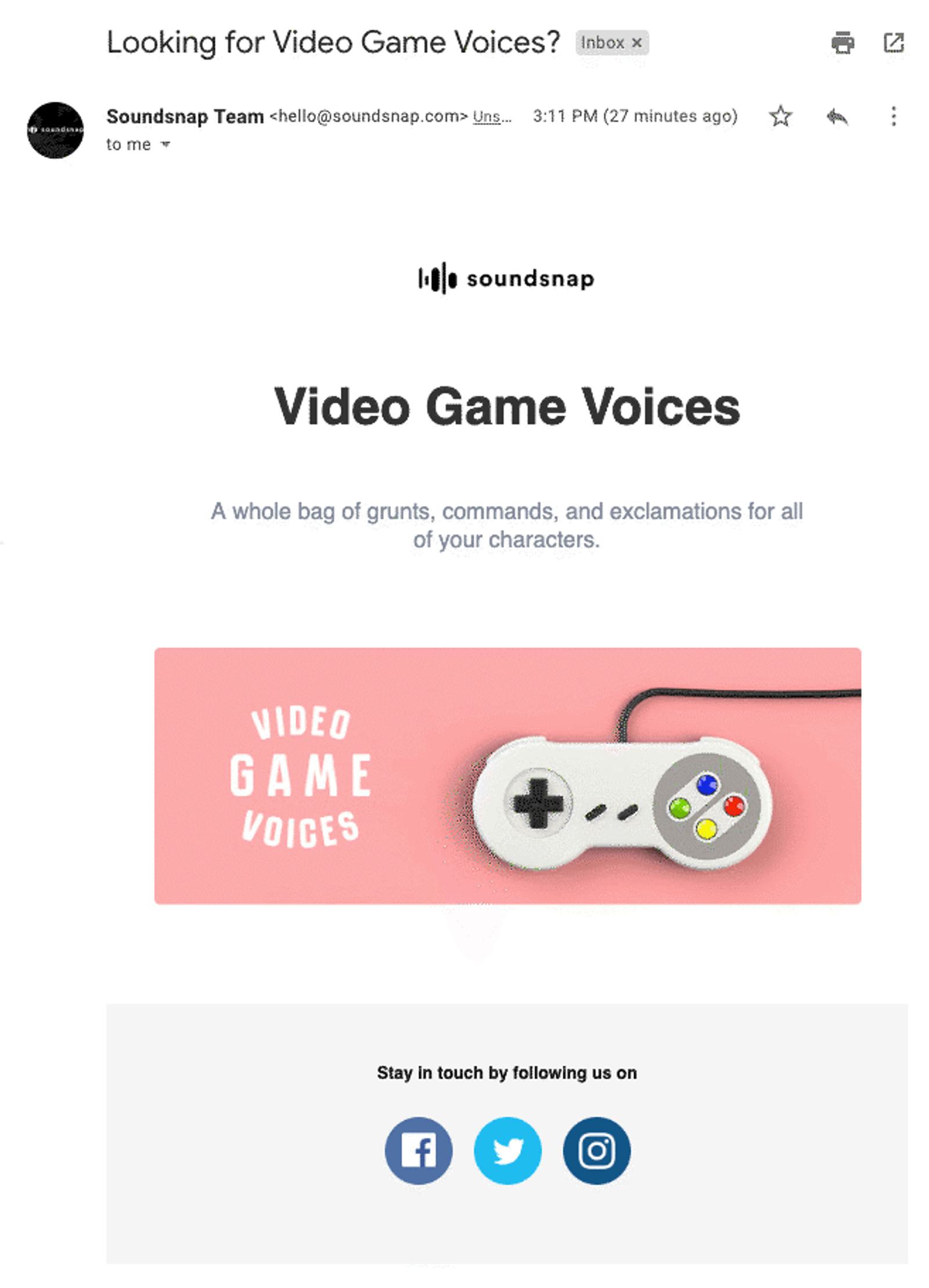
If you search Soundsnap for variations of “robot voices,” you get an email that points you to a related sound collection that might contain exactly what you need.
Soundsnap wasn’t sure what the reception to behavioral targeting would be. Daniel admits he wondered if it “might be a failure.”
How did people respond to the emails they received?
“It turns out there has been an amazing response,” says Daniel. “We increased our month-to-month email revenue — by 300%.”
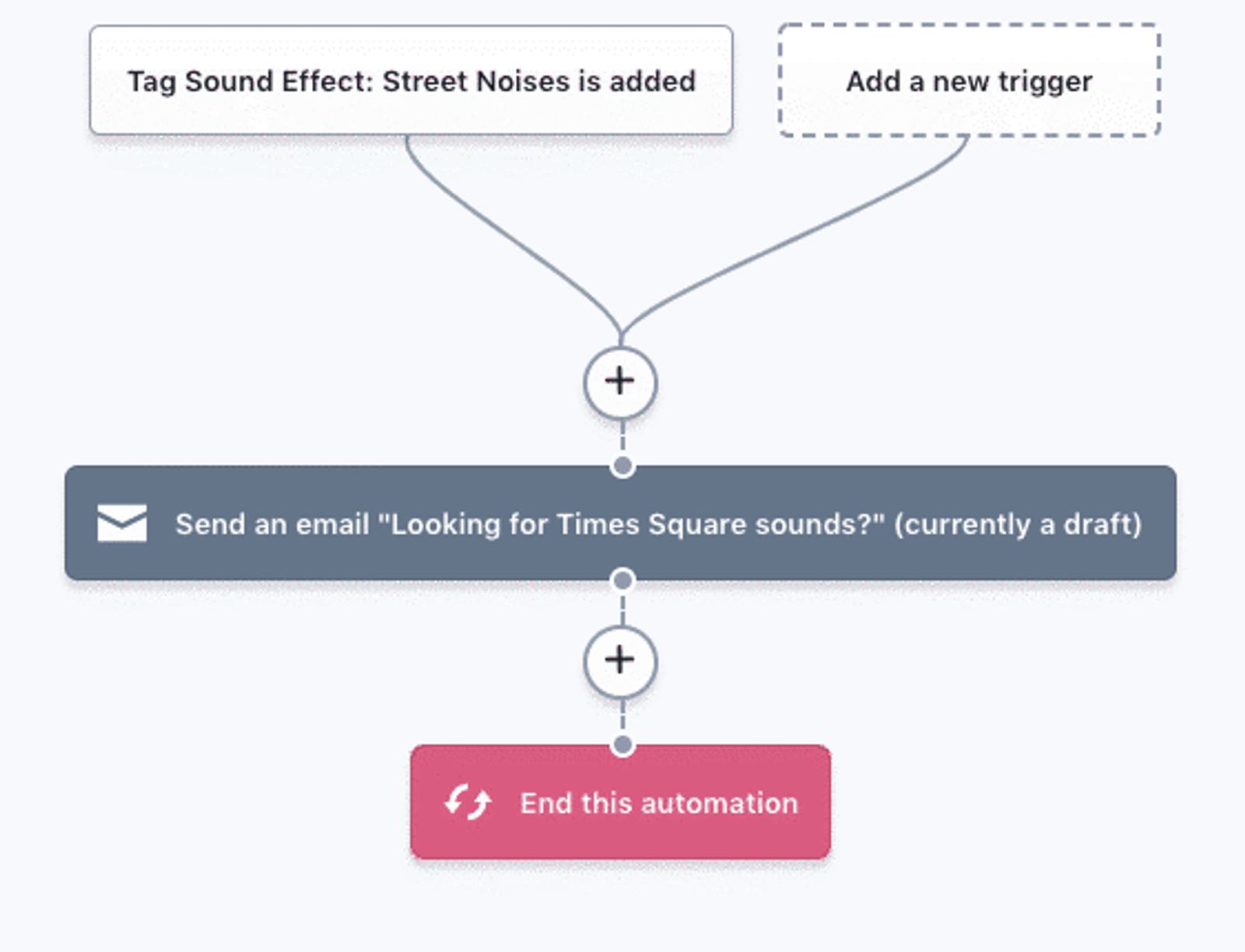
Soundsnap uses an automation, like this one, to trigger a follow-up email after someone visits a specific webpage. You can get this automation for free here.
20% higher open rates with predictive sending
Soundsnap’s office is headquartered in Nicosia, Cyprus, with much of the team operating remotely. Before ActiveCampaign, they scheduled emails to go out all at once, based on their own work hours and time zones.
This led to a logistical problem: lots of people got Soundsnap’s emails when they were the least likely to read them — like in the middle of the night.
“With so many contacts, we as a company can’t just send an email at one time. We have a global reach. There’s not one time that’s good for everyone,” says Daniel.
Luckily, predictive sending lets you send any automated email to your contacts based on their preferred open times.
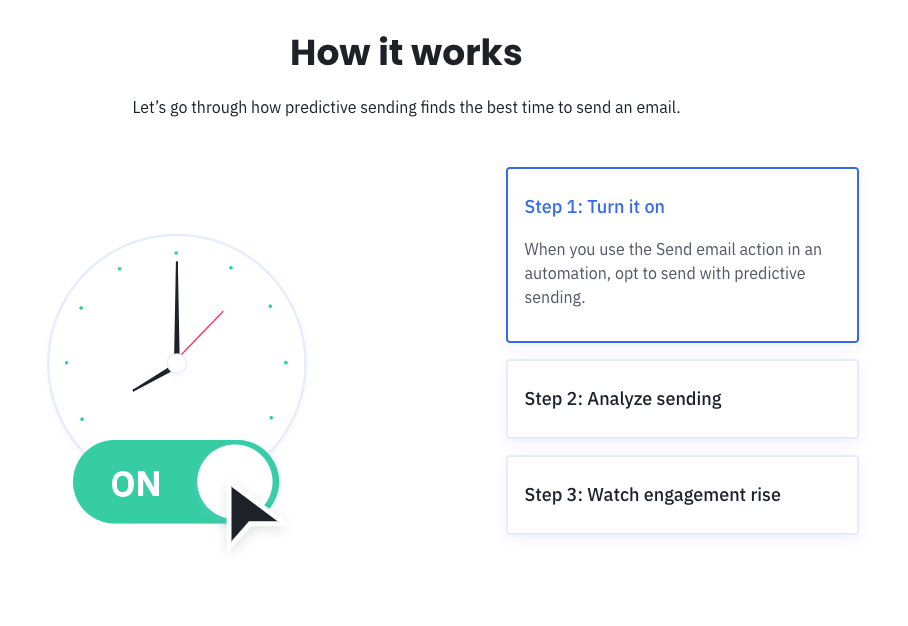
ActiveCampaign’s data model ranks each hour in a day based on a contact’s habitual open time and uses this information to schedule the best send time.
If you don’t have to guess when people will read your emails, you:
- Increase engagement with your emails (through higher opens and click-throughs)
- Give each person an experience that’s more relevant to them
“It was a no-brainer to use predictive sending. At the end of the day, our email campaigns will be more successful.”
How do you start a conversation about what really matters to your customers?
Once a customer gives you their email address, you have a mailbox to send things to. But what will you send? It helps if you know something about your customers — like their interests, needs, and (most significantly) what they want to get from you.
How do you get that information?
You need to ask your contacts to tell you more about themselves.
Soundsnap uses an ActiveCampaign integration with ConvertFlow to create a survey popup on their website. The first time you log in (or the first time you log in after a long time), you get a few short questions. Soundsnap uses this info to assign each user a “persona.”

3 simple survey questions told Soundsnap that 50% of their active users are freelancers or small companies.
Soundsnap has four personas to target:
- Filmmakers & editors
- Sound Designers & editors
- Game Developers
- Musicians & Producers
Any time Soundsnap sends a newsletter, they split their list into at least two pieces – those who finished the survey, and those who didn’t. People who fill out the survey get personalized emails that showcase new blog posts and other content relevant to their user persona.
People want to get relevant content — and Soundsnap has seen an impressive 45% completion rate of their survey.
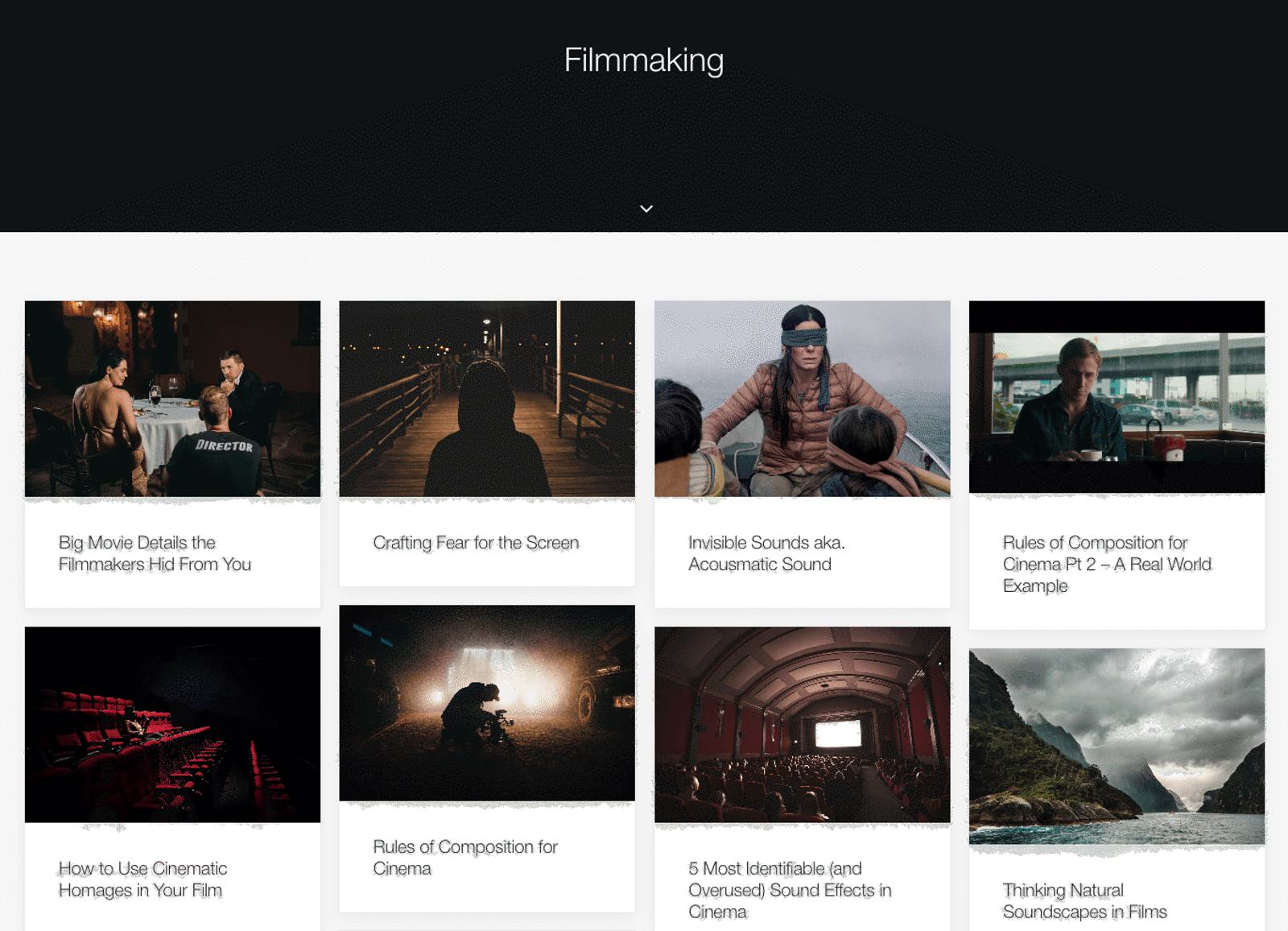
Every month, Soundsnap aims to publish 2–3 new blog posts for each of its user personas.
Once they finish the survey (or not), Soundsnap users get a personalized welcome onboarding series of 3 emails:
- A personal thank-you from the founder, Tasos Frantzolas
- A showcase of social media channels where users can connect with Soundsnap
- A curated collection of Soundsnap’s best blog posts targeted to their profile’s user persona
Blog posts are a great way to use content marketing to give your users something they want. People read content that’s relevant to them.
“We can educate people to use better sounds,” explains Daniel. “Sound is half of your film.”
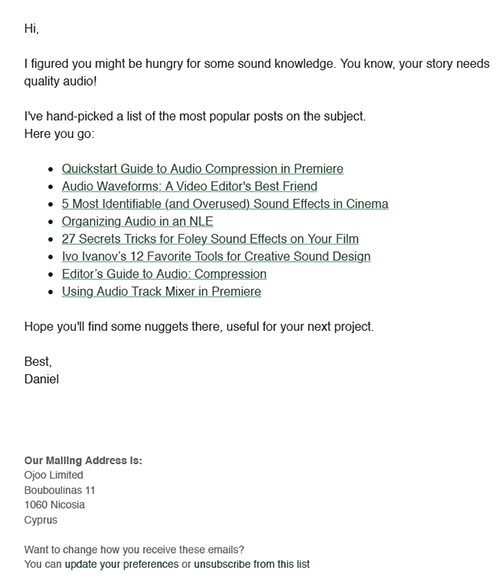
Good content marketing helps you build trust and reach your audience.
Great sounds tell better stories
Soundsnap takes pride in its passion for sound design, and in the dedication of the sound professionals who use their website.
Soundsnap believes that great sounds tell better stories. Sound effects are not a last-minute accessory added to a film. They are as vital (and as thoughtfully choreographed) as a powerful establishing shot or sweeping score.
As legendary sound designer Randy Thom said:
“Sound is important because it can tell us about character, place, and time. It’s important because it informs us and moves us in ways visuals can’t, and because certain combinations of sound and visuals can evoke what neither can do alone.”




